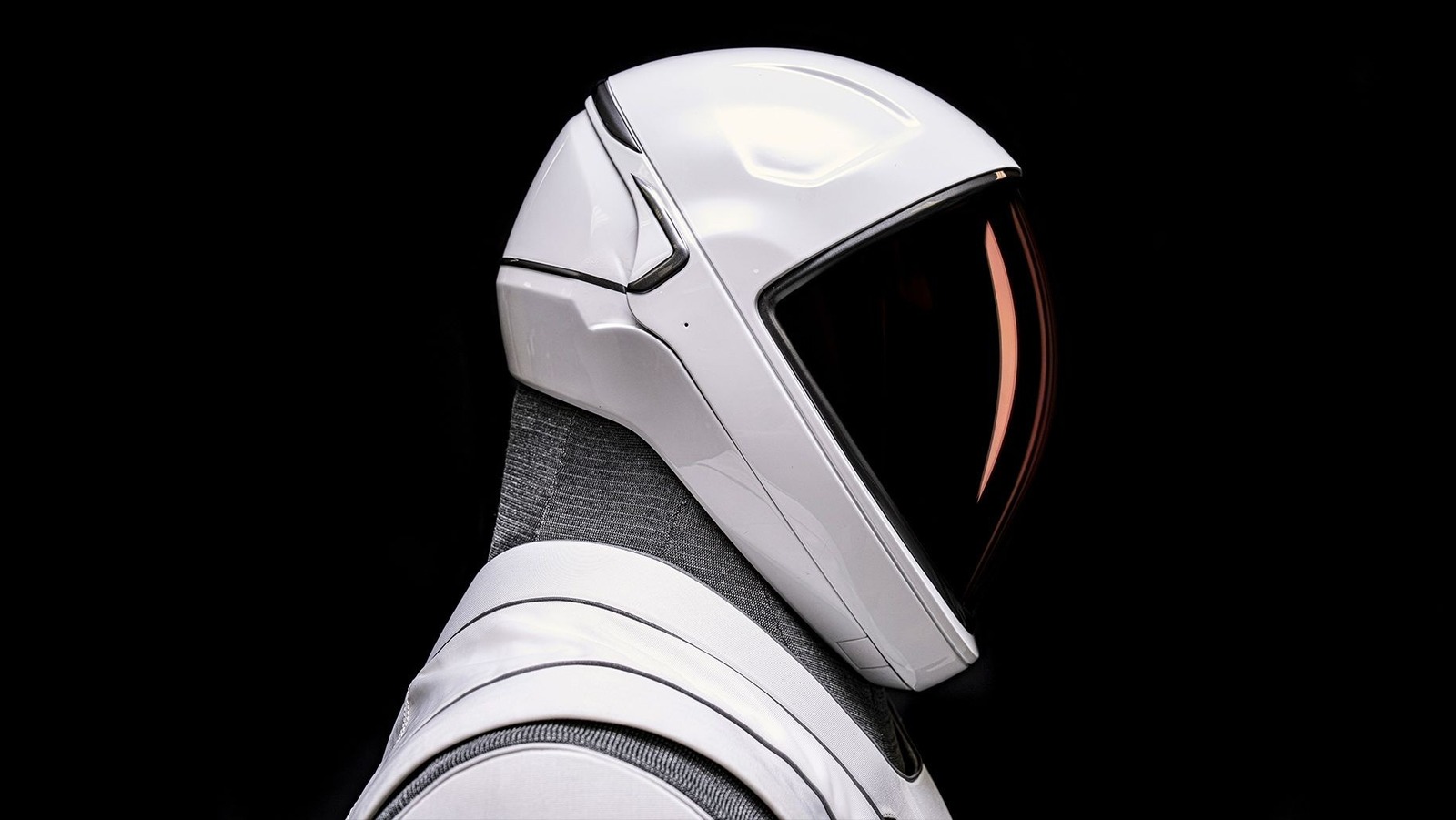
The EVA’s helmet is 3D-printed and has special padding elements that house communication mics and pressure control valves. The new spacesuit comes with an upgraded visor that rotates and offers a wider field of view. The helmet also incorporates a special display screen (heads-up display) and a camera to show critical information like pressure levels inside the spacesuit, temperature levels, and humidity. Moreover, the company claims it reduces bright glare when astronauts are outside the spacecraft performing spacewalks.
The external fabric features flame-resistant materials, with Teflon fabric and Nomex playing a key role. Teflon fabrics were also a part of the spacesuits used for the Apollo missions. NASA’s version of the fabric is called Beta Cloth, which is essentially ultrafine glass filament used as yarn to make fabric and then coated with Teflon (polytetrafluoroethylene or PTFE). With a melting point of over 650 degrees Centigrade, this material offered thermal shielding and protected against dangerous lunar dust for astronauts wearing the A7L space suit for the Apollo missions.
The SpaceX Extravehicular Activity (EVA) suit → https://t.co/z2Z9iVpt6x #Maythe4thBeWithYou pic.twitter.com/peETlLCcDP
— SpaceX (@SpaceX) May 4, 2024
Subsequent iterations saw NASA using new materials like Kevlar, GORE-TEX, and Nomex. Nomex, which is also used in SpaceX’s EVA spacesuit, is a crucial element of firefighter suits for its flame resistance. Aside from being non-inflammable, Nomex is also a preferred choice for making spacesuits owing to its higher levels of comfort and durability. Notably, the suit Neil Armstrong wore for his historical moonwalk had both Teflon and Nomex.

